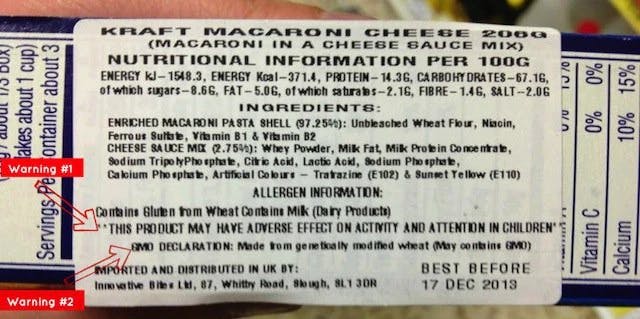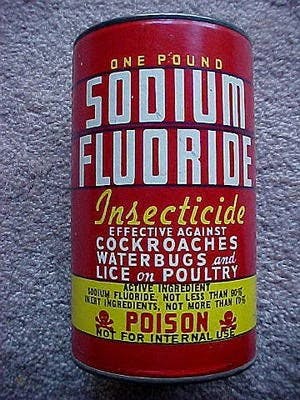Beware Of These 8 USA Ingredients & Practices That Are Banned In Other Countries
The role of the FDA is to ensure food safety for consumers, but despite some of the practices and ingredients that have received a thumbs-up from the agency, many are still banned or regulated in other countries. Shouldn't we be worried?

Not often are we educated on the additives that exist in virtually every item on the shelves – chemicals that are known to be so harmful that they’re banned or regulated in other countries. In fact, thousands of harmful chemicals found in cosmetics have been banned in Europe, while only 11 on the list are banned in the U.S. And while some ingredients have been deemed “safe” by the FDA, the long-term exposure and consumption of certain additives have been shown to cause adverse health effects. Below is a list of the harmful additives, products, and practices that are legal in the United States but not in other countries.
Artificial Food Dyes
Artificial food dyes add vibrancy and color to popular snacks. There aren’t really any benefits to dyes, and it seems that their only use is to appeal to children. Hence, you can often find them in cereal, candy, ice cream, chips, and even in children’s medicine. Some dyes like Yellow 5 and 6 and Red 40 are banned in foods for infants in Europe. Red Dye 40, for example, supposedly has links to aggression and mental disorders like ADHD in children.
Kraft Mac and Cheese previously contained the ingredients Yellow 5 and Yellow 6, which have been linked to ADHD in kids. Some of the other dyes appeared to be carcinogenic. In Europe, a warning label was required on U.S.-imported Kraft Mac and Cheese products that highlighted the effects of these dyes. Parents and health advocates online took notice of the label, causing mainstream attention and an outpour of demands that left Kraft no choice but to remove the artificial dyes. The bad news?

Image Credit: FoodBabe.com
Artificial food dyes are still found in popular snacks and aren't the only ingredients the FDA has unethically fed to millions of Americans. The lack of regulations on these chemicals could lead to adverse health effects and must be avoided whenever possible.
What to do about it: Switch to fruits, vegetables, and organic items when it comes to choosing your snack. When buying medicine for kids, make sure to check the ingredient label for any food coloring.
Coffee
Mold or fungi, known as mycotoxins, is naturally found in coffee and other crops. Aflatoxin B1 is one of the toxins found in coffee that acts as a potent carcinogen. Other mycotoxins found in coffee can lead to irritability or anxiety. Mycotoxin levels are regulated in many European and Asian countries, so it’s not uncommon for coffee to be rejected if the mycotoxin levels are higher than the legal limit in these places. However, the USA doesn’t have any regulatory limits on moldy coffee.
What to do about it: Buy coffee grown in higher altitudes. Mold tends to thrive in areas that are high in moisture, and the drier the climate, the less likely it is for spores to grow on beans. Lastly, store your coffee properly by keeping it sealed and away from moisture or light.
You can’t control what goes on outside, but you can control what goes on inside.
Chlorinated Chicken
U.S. factory farms cleanse chicken carcasses in chlorine dioxide to rid the meat of any salmonella or harmful bacteria. But in one study by Southampton University, research showed that salmonella was not effectively removed by chlorine. In Europe, the use of chlorine has been deemed as poor practice and only water can be used to clean chicken. While the U.S. food industry may still advocate for the use of chlorine and claim that it’s safe, studies have shown that exposure to chlorine can lead to skin, eye, and throat irritation, chest tightness, and even difficulty in breathing. Unfortunately, it’s not a requirement to disclose the sanitation process of meat on packages.
What to do about it: The only way to truly know if your chicken was cleaned without chlorine is to buy from your local farm or do your own research. However, you can limit your exposure to chlorine with shower and drinking water filters.
Fluoridated Water
The addition of fluoride to the U.S. water supply to prevent tooth decay began in 1945 and is still continued to this day. Sodium fluoride is also the active ingredient in toothpaste, but it was first used as an insecticide and rat poison in the early 1900s.

Image credit: Worthpoint.com
According to the CDC, over 327 million Americans are drinking fluoridated water, yet only 3% of Europe is doing the same. The use of fluoride is believed to assist in dental health, but studies have found that fluoride may lead to neurotoxicity that lowers IQ in children.
What to do about it: Invest in a good water filter that removes additives and only buy from the companies that don’t add fluoride to their water. Lastly, you can find grocery stores that have a reverse osmosis water station free of fluoride.
BHA and BHT
Two chemicals that are commonly used to preserve processed foods and cosmetics are butylated hydroxytoluene (BHT) and butylated hydroxyanisole (BHA). Most products that contain oil and grains use BHA and BHT to prevent them from becoming rancid. It’s also found in lard, meat, baked goods, and more. The European Union and Japan have banned these preservatives, and research has shown BHA to be a carcinogen. Rats that were exposed to BHT long-term received damage to their kidneys, liver, lungs, and experienced adverse effects on their reproductive functions.
What to do about it: Buy fresh instead of packaged and always check the ingredient labels of food or cosmetics that may contain BHA and BHT.
Potassium Bromate
Potassium bromate is found in hundreds of packaged baked goods. It enables the dough to rise and strengthen. Potassium bromate is a carcinogen that can irritate the lungs, affect the nervous system, and cause damage to the kidneys. It’s banned in most of Europe, India, Peru, South Korea, and other countries. And while it still may be legal to use in the U.S., California requires a warning label to any items that contain the additive.
What to do about it: Check the ingredient labels of bread found in stores and only buy organic, as potassium bromate can’t be used in organic products.
“There's nothing more important than our good health – that's our principal capital asset.” - Arlen Specter
Azodicarbonamide
Azodicarbonamide is another additive used in baked goods to bleach flour. It’s also a blowing agent for plastic and rubber products. Azodicarbonamide (ADA) is found in many favorite American dishes like burgers, hot dogs, tortillas, pastries, pizza, and more. The European Union has banned ADA for consumption since 2005. The ingredient has caused asthma in some people and acts as a hormone disruptor.
What to do about it: Buy organic, unbleached flour and foods that don’t contain ADA.
Synthetic Hormones Found in Beef
The FDA has approved the use of synthetic growth hormones in cattle even though it was banned in Europe in 1981. The EU found that six hormones that were used in livestock caused developmental and carcinogenic effects on consumers. Not only are these hormones a health concern, but they’re an environmental issue as well. These steroids have been found in groundwater, negatively affecting aquatic life and humans.
What to do about it: Buy items that are labeled “hormone-free” or get to know your local farmer.
Closing Thoughts
In this day and age it’s nearly impossible to constantly stay on top of harmful ingredients and refrain from them. I don’t think guilting ourselves into shame whenever we eat processed foods is healthy or necessary, but I do think we should do the best we can when it comes to our choices. It’s incredibly important to stay conscious of the ingredients that enter your body. Make it a habit to check the ingredient labels at the grocery store. If there are ingredients that sound unfamiliar to you, it’s always good to research the possible side effects they may have when consumed.
Love Evie? Let us know what you love and what else you want to see from us in the official Evie reader survey.